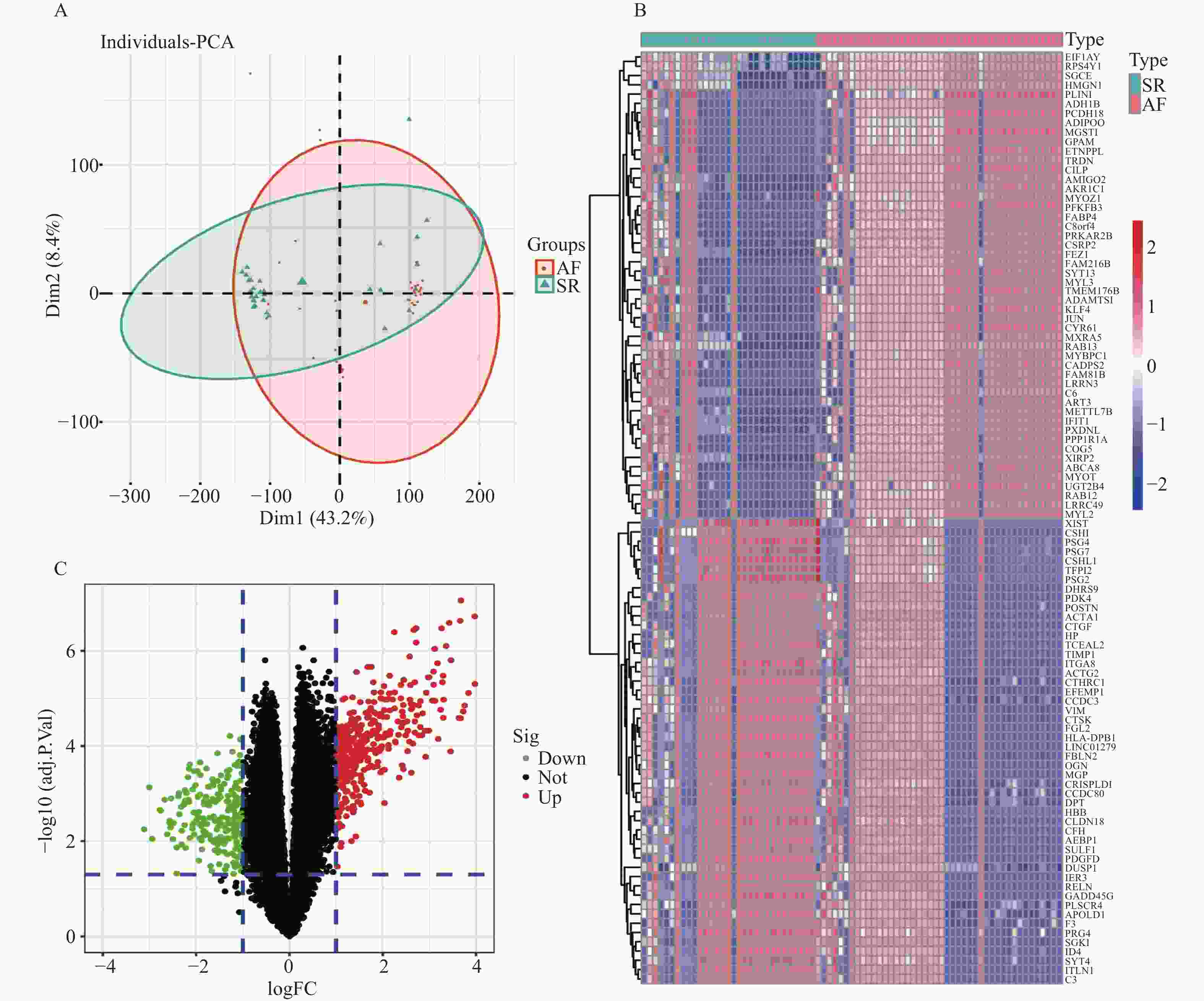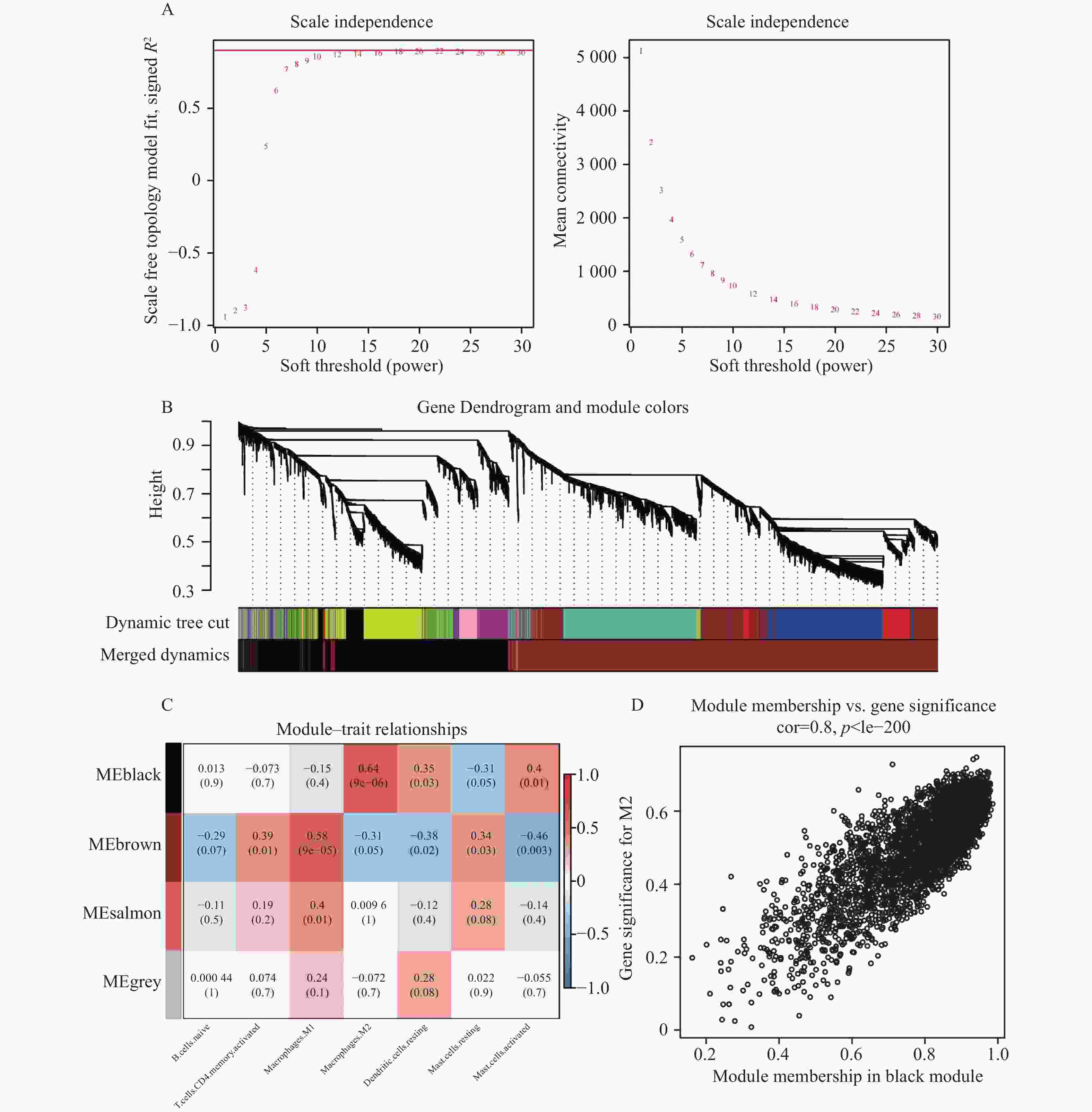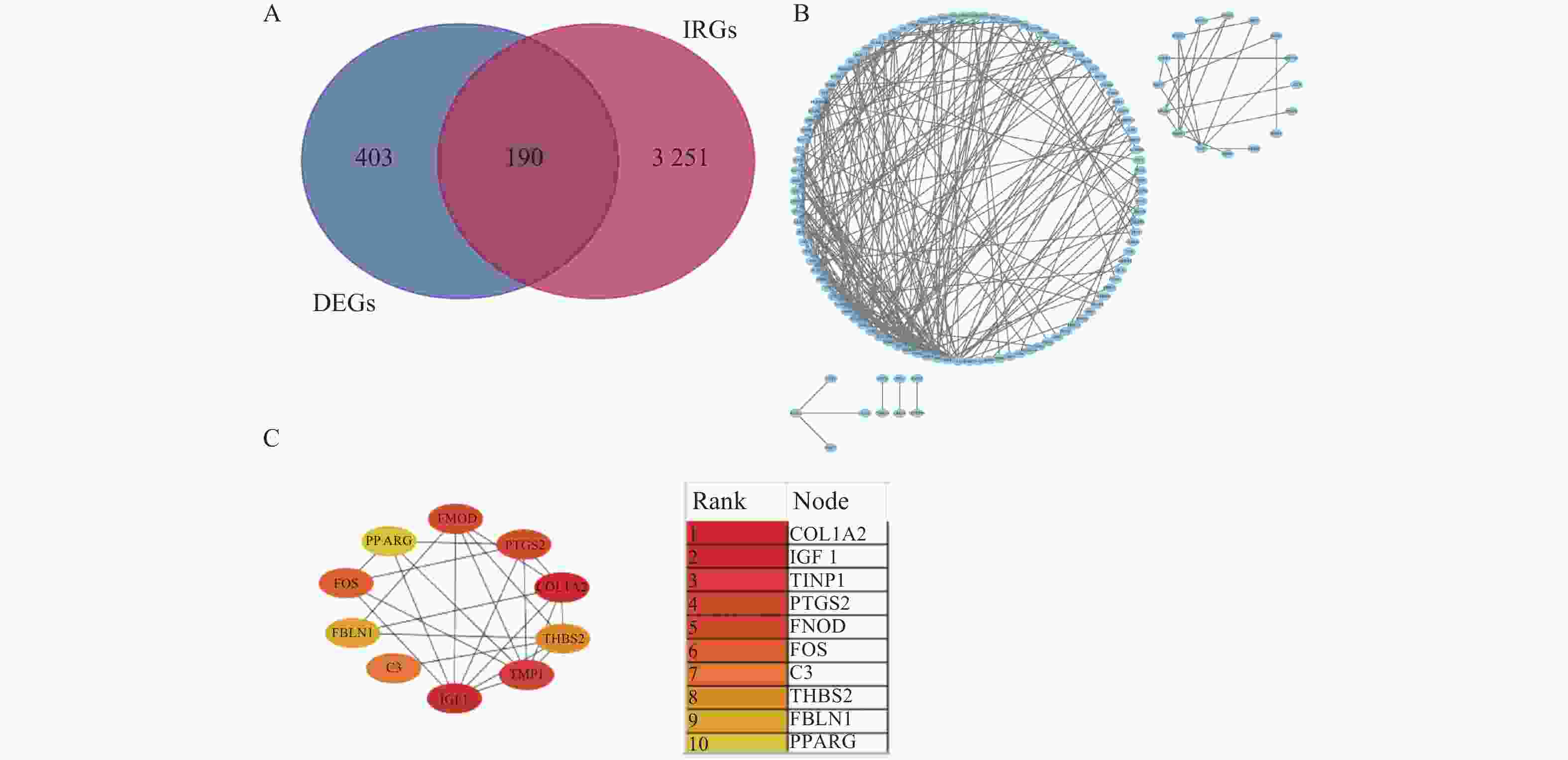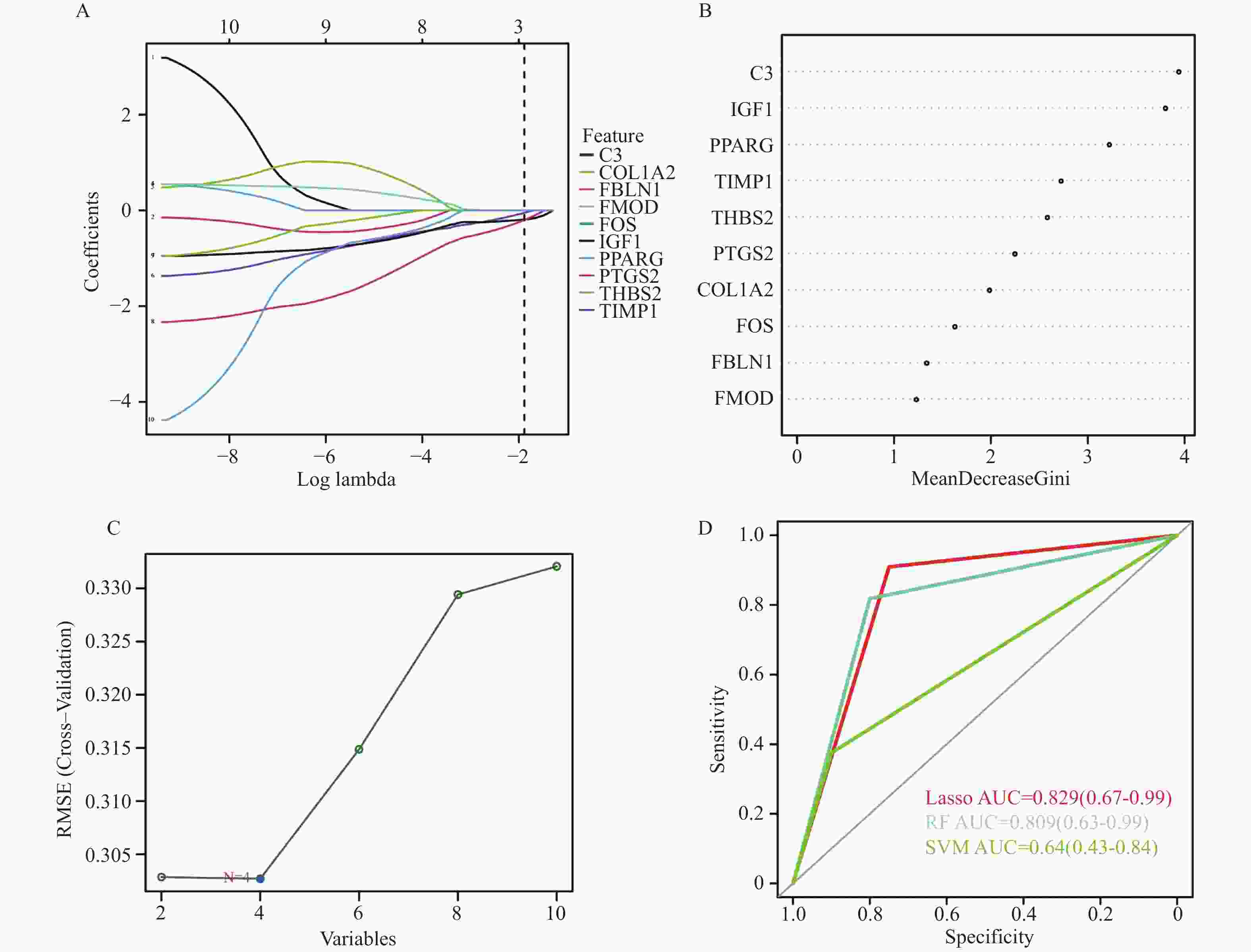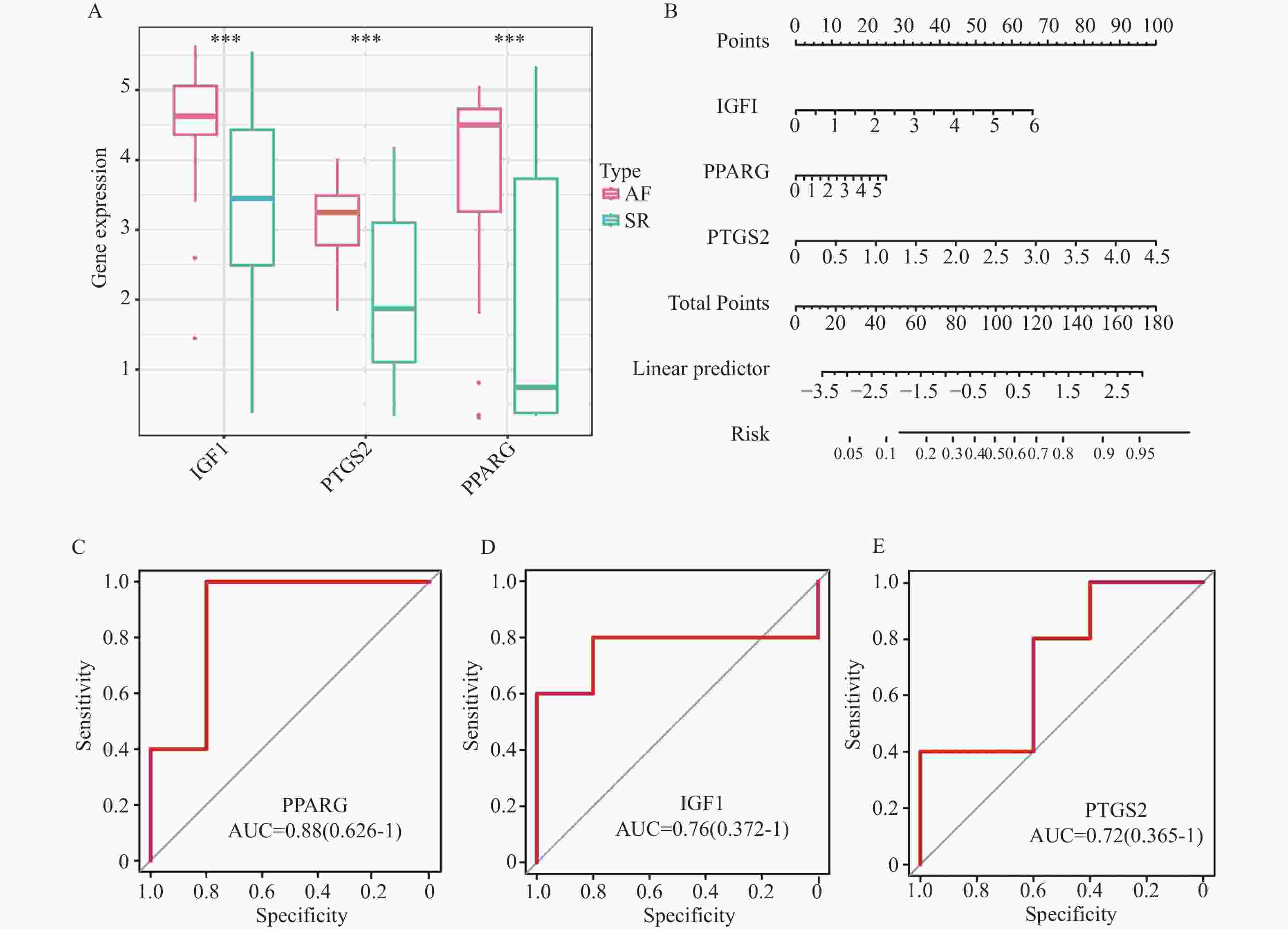|
[1]
|
Zhu Y,Shi J,Zheng B,et al. Genetic findings in patients with primary fibrotic atrial cardiomyopathy[J]. European Journal of Medical Genetics,2022,65(3):104429. doi: 10.1016/j.ejmg.2022.104429
|
|
[2]
|
Litviňuková M,Talavera-López C,Maatz H,et al. Cells of the adult human heart[J]. Nature,2020,588(7838):466-472. doi: 10.1038/s41586-020-2797-4
|
|
[3]
|
Zaidi Y, Aguilar E G, Troncoso M, et al. Immune regulation of cardiac fibrosis post myocardial infarction. [Z]. 2021: 77, 109837.
|
|
[4]
|
Tian Y,Liu S,Zhang Y,et al. Immune infiltration and immunophenotyping in atrial fibrillation[J]. Aging (Albany NY),2023,15(1):213-229. doi: 10.18632/aging.204470
|
|
[5]
|
Wynn T A,Vannella K M. Macrophages in tissue repair,regeneration,and fibrosis[J]. Immunity,2016,44(3):450-462. doi: 10.1016/j.immuni.2016.02.015
|
|
[6]
|
Newman A M,Liu C L,Green M R,et al. Robust enumeration of cell subsets from tissue expression profiles[J]. Nat Methods,2015,12(5):453-457. doi: 10.1038/nmeth.3337
|
|
[7]
|
Langfelder P,Horvath S. WGCNA: An R package for weighted correlation network analysis[J]. BMC Bioinformatics,2008,9(1):559. doi: 10.1186/1471-2105-9-559
|
|
[8]
|
Liu Y, Shi Q, Ma Y, et al. The role of immune cells in atrial fibrillation[J]. J Mol Cell Cardiol, 2018: 123, 198-208.
|
|
[9]
|
Zhang Y L,Teng F,Han X,et al. Selective blocking of CXCR2 prevents and reverses atrial fibrillation in spontaneously hypertensive rats[J]. J Cell Mol Med,2020,24(19):11272-11282. doi: 10.1111/jcmm.15694
|
|
[10]
|
Hulsmans M,Schloss M J,Lee I H,et al. Recruited macrophages elicit atrial fibrillation[J]. Science,2023,381(6654):231-239. doi: 10.1126/science.abq3061
|
|
[11]
|
Grune J,Yamazoe M,Nahrendorf M. Electroimmunology and cardiac arrhythmia[J]. Nature reviews cardiology,2021,18(8):547-564. doi: 10.1038/s41569-021-00520-9
|
|
[12]
|
Sun Z,Zhou D,Xie X,et al. Cross-talk between macrophages and atrial myocytes in atrial fibrillation[J]. Basic Res Cardiol,2016,111(6):63. doi: 10.1007/s00395-016-0584-z
|
|
[13]
|
Bosco M C. Macrophage polarization: reaching across the aisle?[J]. J Allergy Clin Immunol,2019,143(4):1348-1350. doi: 10.1016/j.jaci.2018.12.995
|
|
[14]
|
Wen S,Yan W,Wang L. mRNA expression disturbance of complement system related genes in acute arterial thrombotic and paroxysmal atrial fibrillation patients[J]. Ann Palliat Med,2020,9(3):835-846. doi: 10.21037/apm.2020.04.18
|
|
[15]
|
Liu L,Zheng Q,Lee J,et al. PD-1/PD-L1 expression on CD(4+) T cells and myeloid DCs correlates with the immune pathogenesis of atrial fibrillation[J]. J Cell Mol Med,2015,19(6):1223-1233. doi: 10.1111/jcmm.12467
|
|
[16]
|
Cheng W L,Kao Y H,Chen Y C,et al. Macrophage migration inhibitory factor increases atrial arrhythmogenesis through CD74 signaling[J]. Transl Res,2020,216:43-56. doi: 10.1016/j.trsl.2019.10.002
|
|
[17]
|
Chen Y,Fu L,Pu S,et al. Systemic lupus erythematosus increases risk of incident atrial fibrillation: A systematic review and meta-analysis[J]. Int J Rheum Dis,2022,25(10):1097-1106. doi: 10.1111/1756-185X.14403
|
|
[18]
|
Kunamalla A,Ng J,Parini V,et al. Constitutive expression of a dominant-negative TGF-β type II receptor in the posterior left atrium leads to beneficial remodeling of atrial fibrillation substrate[J]. Circ Res,2016,119(1):69-82. doi: 10.1161/CIRCRESAHA.115.307878
|
|
[19]
|
Liang Y,Zhou Y,Wang J,et al. Downregulation of fibromodulin attenuates inflammatory signaling and atrial fibrosis in spontaneously hypertensive rats with atrial fibrillation via inhibiting TLR4/NLRP3 signaling pathway[J]. Immun Inflamm Dis,2023,11(10):e1003. doi: 10.1002/iid3.1003
|
|
[20]
|
Gao L,Kan C,Chen X,et al. Mechanism of action of Zhi Gan Cao decoction for atrial fibrillation and myocardial fibrosis in a mouse model of atrial fibrillation: A network pharmacology-based study[J]. Comput Math Methods Med,2022,2022:4525873.
|
|
[21]
|
Raman K,Aeschbacher S,Bossard M,et al. Whole blood gene expression differentiates between atrial fibrillation and sinus rhythm after cardioversion[J]. PLoS One,2016,11(6):e157550.
|
|
[22]
|
Troncoso R,Ibarra C,Vicencio J M,et al. New insights into IGF-1 signaling in the heart[J]. Trends Endocrinol Metab,2014,25(3):128-137. doi: 10.1016/j.tem.2013.12.002
|
|
[23]
|
Fujita M,Takada Y K,Takada Y. Insulin-like growth factor (IGF) signaling requires αvβ3-IGF1-IGF type 1 receptor (IGF1R) ternary complex formation in anchorage independence,and the complex formation does not require IGF1R and Src activation[J]. J Biol Chem,2013,288(5):3059-3069. doi: 10.1074/jbc.M112.412536
|
|
[24]
|
Zhao Z,Li R,Wang X,et al. Attenuation of atrial remodeling by aliskiren via affecting oxidative stress,inflammation and PI3K/Akt signaling pathway[J]. Cardiovasc Drugs Ther,2021,35(3):587-598. doi: 10.1007/s10557-020-07002-z
|
|
[25]
|
Cheng W,Zhu Y,Wang H. The MAPK pathway is involved in the regulation of rapid pacing-induced ionic channel remodeling in rat atrial myocytes[J]. Mol Med Rep,2016,13(3):2677-2682. doi: 10.3892/mmr.2016.4862
|
|
[26]
|
Dalli J,Chiang N,Serhan C N. Elucidation of novel 13-series resolvins that increase with atorvastatin and clear infections[J]. Nat Med,2015,21(9):1071-1075. doi: 10.1038/nm.3911
|
|
[27]
|
Kim S F,Huri D A,Snyder S H. Inducible nitric oxide synthase binds,S-nitrosylates,and activates cyclooxygenase-2[J]. Science,2005,310(5756):1966-1970. doi: 10.1126/science.1119407
|
|
[28]
|
Wang Z,Zeng Z,Hu Y,et al. Network pharmacology and pharmacological mechanism of CV-3 in atrial fibrillation[J]. Evid Based Complement Alternat Med,2022,2022:5496299.
|
|
[29]
|
Barroso I,Gurnell M,Crowley V E,et al. Dominant negative mutations in human PPARgamma associated with severe insulin resistance,diabetes mellitus and hypertension[J]. Nature,1999,402(6764):880-883. doi: 10.1038/47254
|
|
[30]
|
Park S H,Choi H J,Yang H,et al. Endoplasmic reticulum stress-activated C/EBP homologous protein enhances nuclear factor-kappaB signals via repression of peroxisome proliferator-activated receptor gamma[J]. J Biol Chem,2010,285(46):35330-35339. doi: 10.1074/jbc.M110.136259
|
|
[31]
|
Chen Y L, Chuang J H, Wang H T, et al. Altered expression of circadian clock genes in patients with atrial fibrillation is associated with atrial high-rate episodes and left atrial remodeling[J]. Diagnostics (Basel), 2021, 11(1): 90.
|
|
[32]
|
Wang N,Yang G,Jia Z,et al. Vascular PPARgamma controls circadian variation in blood pressure and heart rate through Bmal1[J]. Cell Metab,2008,8(6):482-491. doi: 10.1016/j.cmet.2008.10.009
|





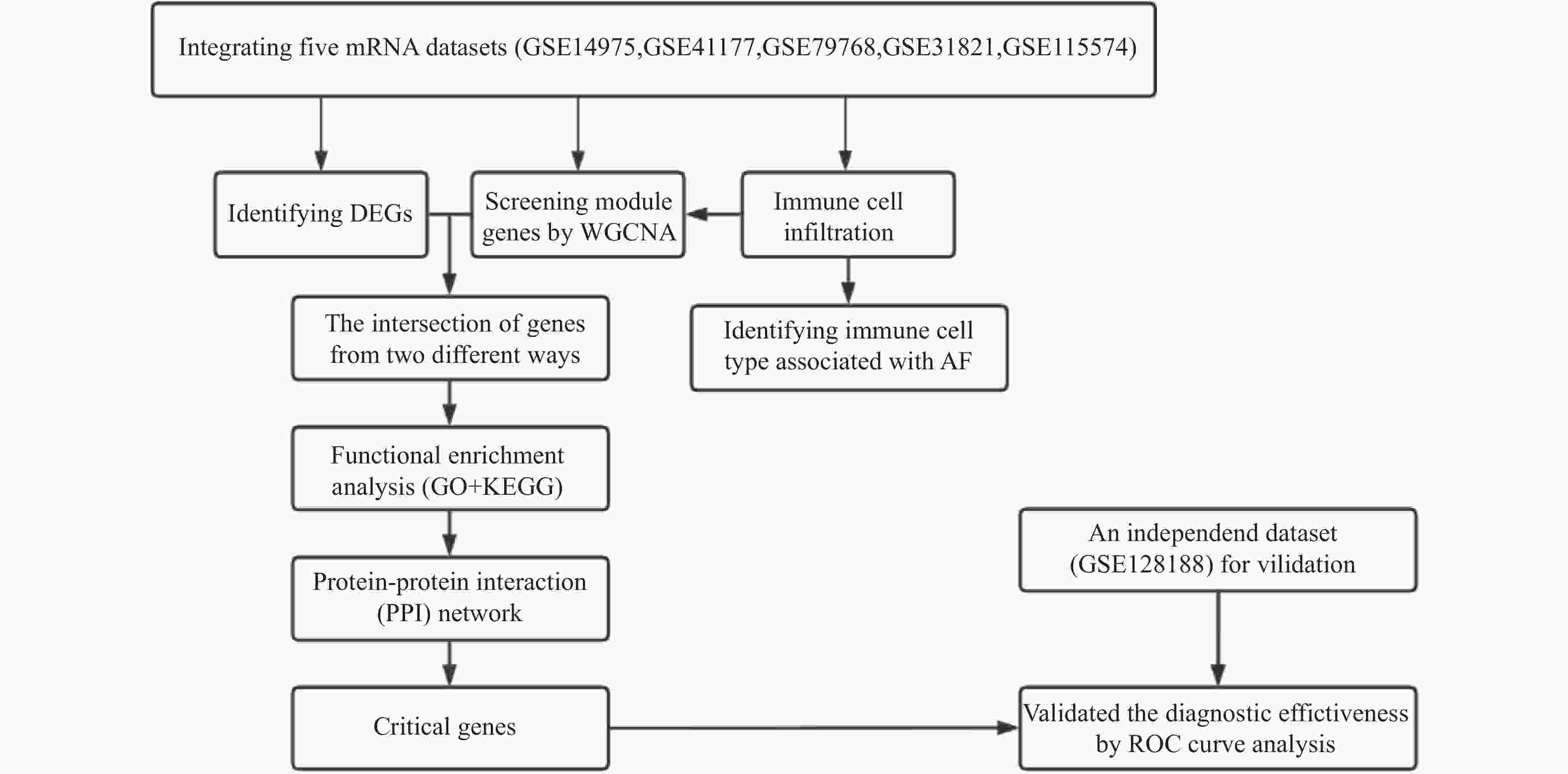
 下载:
下载:
